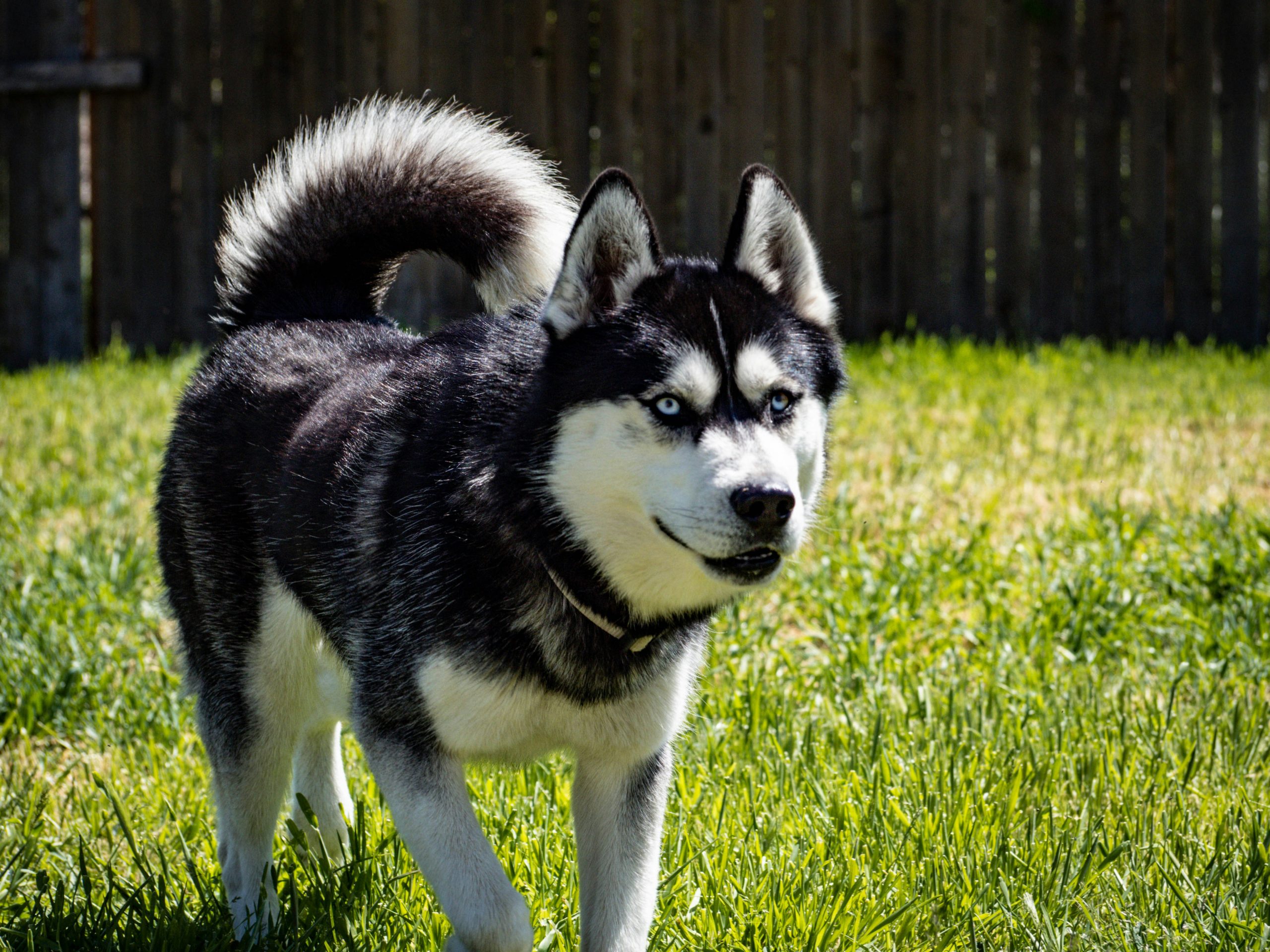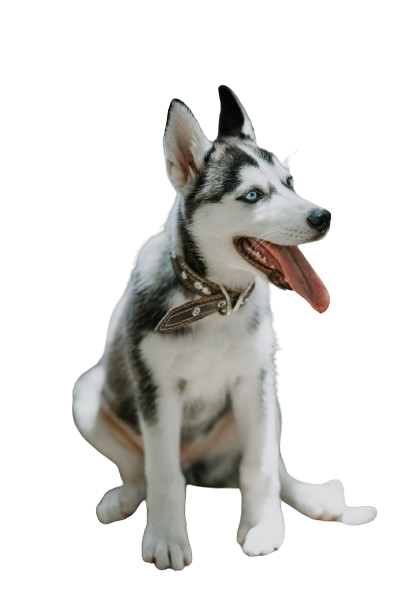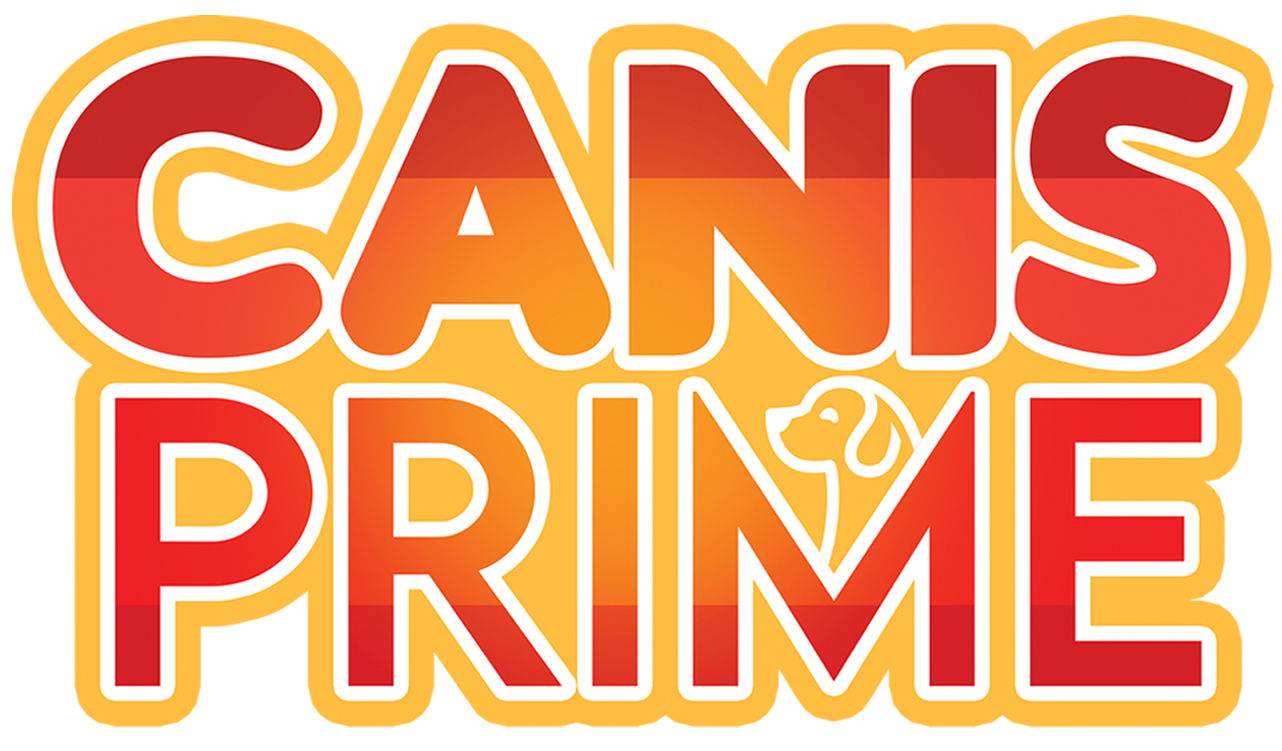

Origin:
Russia
Color:
black and white fur, they can also come in a range of other colors, including red, sable, silver, and gray
Average Weight:
- Male: 20-26 kgs
- Female: 17-24 kgs
Life Expectancy:
12-15 years
Average Height:
20-23.5 inches
Know More About Me

Description:
While the Siberian Husky isn’t naturally fit for the warm climate of the Philippines, their friendly personality, sociable attitude, and lively energy have made them popular pals for adventurous folks and families. Their unique appeal and ability to adjust to different places have made them favorites among dog lovers in the Philippines. Just keep in mind they’ll likely prefer staying cool indoors most of the time!

Feed Requirement:
Let’s talk about how much food Huskies need at different ages. When they’re puppies, usually around 2 to 3 months old, they’ll need about 3/4 cup to 2 cups of food a day, split into three meals. As they grow, from 3 to 4 months old, they’ll need between 2 to 3 ½ cups a day, and from 4 to 6 months, around 3 ½ to 4 cups daily. When they’re between 6 to 12 months old, they’ll need about 3 to 4 cups a day, and when they’re older than 12 months, they’ll need 2 to 4 cups.

Best Food to Feed:
The best foods for Siberian Huskies are those that are high in protein, contain healthy fats, and are rich in essential nutrients. Huskies can eat most meat/protein, including lamb, beef, chicken, turkey, pork, fish, and eggs. They can also consume plant-based proteins such as grains, legumes, and veggies. Bits of fruit, aside from grapes and raisins, are also good. Avoid foods with fillers like corn, soy, and wheat, as well as artificial additives and preservatives. Additionally, consider feeding your Husky a balanced diet that includes fruits and vegetables for added vitamins and minerals.

Common Health Problems:
Siberian Huskies generally enjoy good health, but like all breeds, they are susceptible to certain health issues. These include hip dysplasia, eye diseases like cataracts and progressive retinal atrophy, corneal dystrophy, uveodermatologic syndrome, follicular dysplasia, zinc deficiency, and hypothyroidism.
- Hip dysplasia is a common concern among Huskies, causing discomfort and requiring treatment such as surgery or weight management. Eye diseases like cataracts and progressive retinal atrophy can lead to blindness if not detected early. Corneal dystrophy affects the cornea and may cause vision problems. Uveodermatologic syndrome affects the eyes and skin, but its skin effects are only cosmetic.
- Follicular dysplasia can result in abnormal hair growth and skin issues, with no specific treatment available. Zinc deficiency may lead to hair loss in various body parts, and zinc supplements can help manage symptoms. Hypothyroidism, characterized by weight gain, fur loss, and lethargy, requires medical attention.
- While Siberian Huskies are known for their low food requirements, they should still receive a high-protein diet to stay healthy. Regular vet check-ups are crucial for early detection and management of these health concerns.
- Agility 90%
- Temperament 90%
- Lifespan 80%
- Independence 90%
- Protection 30%


The Story of Nome That Made “Balto” famous
Source:
https://www.11pets.com/en/news/siberian-husky-weight-chart
https://huskygifts.com/how-much-should-huskies-eat/
https://worldofdogz.com/best-diet-for-huskies/
https://canna-pet.com/articles/siberian-husky-health-problems-issues/
https://www.akc.org/expert-advice/lifestyle/10-facts-siberian-huskies/
https://www.huskyvillage.it/en/huskies/the-true-story-of-balto-the-worlds-most-famous-husky/#
Top 5 Fun Facts of Siberian Huskies
Fact #1: They Were Developed as Working Sled Dogs Over Thousands of Years
Fact #2: Some Believe Siberians Guard the Gates of Heaven
Fact #3: They Brought Lifesaving Serum to Fight an Epidemic in 1925
Fact #4: They Were Used During World War II for Search and Rescue
Fact #5: They Can Be Expert Escape Artists
Do You Know?
When we talk about sled dogs, we inevitably end up thinking about Balto, the husky that the famous Disney cartoon consecrated to the history of cinema, making this animal part of the collective imagination. Did Balto the dog really exist? Yes, Balto was a real dog, but he wasn’t the main character in the story. The story begins in Nome, Alaska, in January 1925, during a diphtheria epidemic. The town needed antitoxin to treat the illness, but the nearest supply was over 1,700 kilometers away in Anchorage, and the usual transport routes were impassable due to severe winter weather. With temperatures as low as minus 70 degrees Celsius and strong winds, ships couldn’t dock, planes couldn’t fly, and the railway didn’t reach Nome. So, they turned to dog sleds, the traditional mode of transportation used by the Inuit people in snowy regions. Balto was part of the team that helped deliver the antitoxin to Nome, but he wasn’t alone in this heroic effort.
